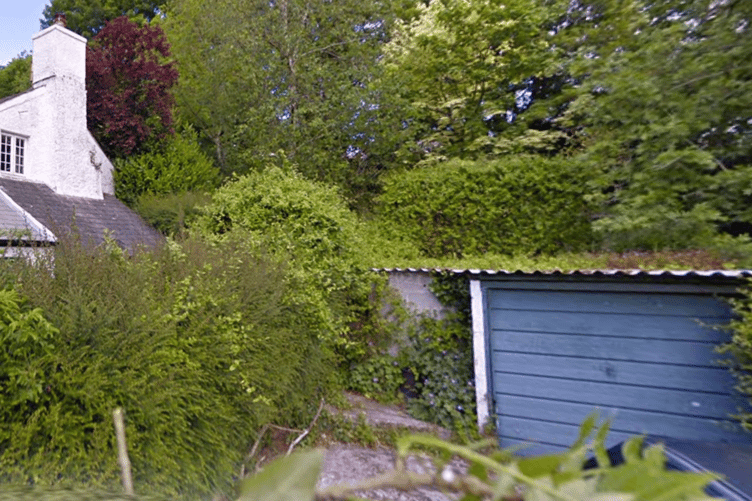EACH week, hundreds of planning applications come before Cornwall Council’s planning department, seeking to win approval for various plans right across the Duchy.
These plans can comprise of a number of different reasonings– ranging from permission to replace windows or listed building consent ranging up to large house building developments or changing of use of a building, for instance, from an office to a café, or flats.
Within this large and often complex system, there are a number of formats from which planning advice and approval can be sought.
These range from full applications where all the details which comprise a proposed development or work to a building are submitted, to outline applications, where further details are yet to be confirmed, for example, an outline application with reserved matters for appearance may not confirm the final proposed development but rather seek permission in principle.
An example of this is one for an outline permission for 20 dwellings on land with reserved matters for appearance and scale; the reserved matters would require further permission later for their inclusion.
Other types of applications include pre-application advice requests, where would-be developers submit often outline proposals to a local authority to ascertain whether it is likely to gain support or not prior to submitting a planning application.
The vast majority of applications are decided by planning officers employed by a local authority under ‘delegated powers’, meaning they do so on behalf of their employer, however, some applications are ‘called in’ by local councillors to be discussed at an area’s strategic planning committee meeting, meaning the final decision rests with a committee of councillors.
Self catering accommodation to revert to owners use
PERMISSION has been approved for the reversion of self-catering accommodation at a property in Looe.
The application, submitted by Mrs Sarah Adcock concerns the property of Calico, Marine Drive, West Looe, currently used as a guest house which in 2017 received planning permission to include self-contained letting rooms.
They told Cornwall Council the reasons for wishing to revert the rooms, saying: “The impact of the COVID-19 pandemic since brought about, what appears to have been a short-term boom in the local tourism industry and for a period there was unprecedented competition in the demand for holiday accommodation within Cornwall.
“However since the pandemic has passed, the wealth of new holiday accommodation units and a number of summers of below average temperatures and again, unprecedented rainfall, have put tremendous pressure on the industry. This has led to a combination of drastically increased supply and drastically decreased demand.
“The letting rooms will become bedrooms for the Owner's use, and the self-catering unit, a games room. In addition, the Applicant's would like to extend upwards above an existing flat roof section to provide a modest additional double bedroom for their own use.”
The Council issued conditional approval, stating: “Notwithstanding the approved plans the first floor window serving an en suite within the north eastern elevation of the first floor extension hereby approved shall be obscure glazed to at least Pilkington level 5 or equivalent and fixed shut below 1.7m.”
Garage at Gunnislake refused permission
PLANNING permission for a replacement garage at a historic property in Gunnislake has been refused by Cornwall Council’s planning department.
Mr Toby Truman applied to the local authority to demolish a dilapidated garage and replace it with a double sized garage with a pitched roof.
In an accompanying heritage statement, the history of the property was described. It stated: Glebe House is located within the Tamar Valley Mining District World Heritage Site. Constructed in the late 18th or early 19th century, the east-facing gable end was modified to include a large inglenook fireplace with a cloam oven, supported by records listing it as a dwelling in the 1815 census.
“The current kitchen, believed to have been added in the 19th century, was originally a shop with a hatch opening onto Hoopers Lane. The proposed project involves demolishing the existing run down garage building and re-building a detached double garage with a pitched roof, intended to serve as ancillary to Glebe House.
“The proposed materials will be traditional and sympathetic to the host dwelling, the local area and the historic character of Tamar Valley. Nearby are mining-related structures, including Clitters Mine and Greenhill Works.
“The proposed garage will be centrally located within the plot and will not be visible from the broader surroundings. In conclusion, this small, unobtrusive building will blend seamlessly into the Tamar Valley Mining District World Heritage Site and, using traditional materials, will not harm the heritage site or any assets.”

However, this was not a view shared by others.
In its consultation response, Calstock Parish Council said: “The Parish Council supports this application but notes concerns from local residents about massing and overlooking.”
WHS (World Heritage Site) Planning Advice also responded, adding: “We have reviewed the submitted information and do not object to the principle of a replacement garage here.
“Notwithstanding the above, the WHS Office is concerned that the proposed garage is very large with an unconventional and somewhat contrived design that does little to reflect local distinctiveness and that it has more the appearance and scale of a small detached dwelling as opposed to an incidental building related to functions of the host dwelling.
“A smaller and more conventionally designed garage would likely be more in keeping within this section of the WHS.
“Harm to any attributes of Outstanding Universal Value (international significance) within the World Heritage Site risks the loss of this status for the entire designated property across Cornwall and west Devon.”
In a report accompanying the refusal, the planning officer noted: “This application seeks permission for the construction of a replacement garage. The replacement garage would be arranged over two storeys, with a garage and WC to the ground floor and workshop area to the first floor.
“Due to the rising site levels, ground level access could be achieved at both levels. The ground floor elevation features a garage door and window, with the side elevations each having a pedestrian access door and another window to the west. The first-floor level on the road-facing elevation features a steeply sloping roof with solar panels.
“The rear elevation features double/French doors with windows to either side. There is also a large first floor window to the first-floor west elevation. The ground floor garage space and WC would measure 39.05sqm and the first-floor workshop space would measure 42.89sqm. The building would have a total floorspace of 81.94sqm.
“The site is occupied by an existing garage. The garage is of a single storey with a slightly sloping near-flat roof. The garage also contains a WC. As existing, the garage has a floorspace of 30.71sqm. The site is located on Hoopers Lane, a narrow unclassified road that runs up the hill towards the west.
“The northern side of Hoopers Lane, where the site is located, is characterised by older, more traditional style dwellings. To the south of Hoopers Lane are more modern dwellings, varying between bungalows and two storey dwellings. They are set back from Hoopers Lane by private garden areas.”
Refusing the application, the planning department for the council said: “By reason of its poor design due to prominence within the street scene, bulky form and massing to the first floor the proposal would unduly detract from the character and appearance of Hoopers Lane. In addition, the proposal would have a detrimental impact on the landscape and scenic beauty of the Tamar Valley National Landscape and the historic landscape of the Tamar Valley World Heritage Site.”
Keep up to date with the latest planning applications and other statutory notices (such as alcohol licensing and probates) that affect where you live by visiting our online Public Notice Portal – be the first to know by visiting www.publicnoticeportal.uk/cornish-times-series.

.jpeg?width=209&height=140&crop=209:145,smart&quality=75)



Comments
This article has no comments yet. Be the first to leave a comment.